Mar-al-Lago will fail – without credibility, nothing works.
Donald Trump sees himself as the deal-maker. He has to reach many agreements to save the US. Without credibility, this will come to nothing, because the power of the US as a substitute for credibility is on the wane.
Peter Hanseler
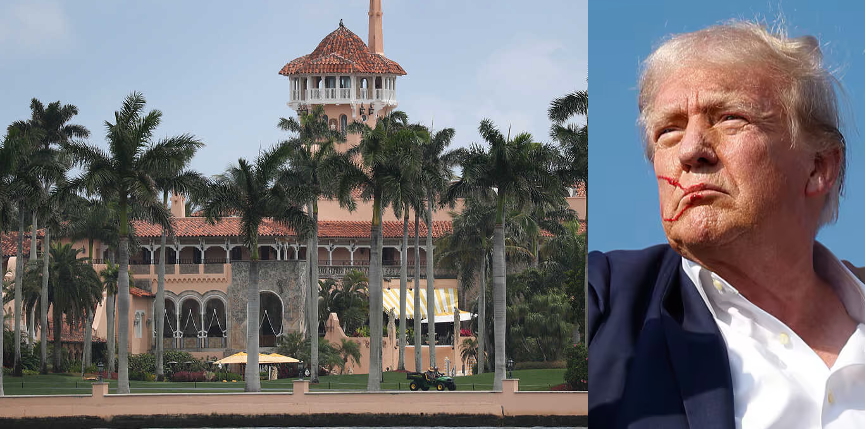
Introduction – Art of the Deal
If you have to make a single deal, you might get away with fibbing. However, the Trump administration needs to conclude countless deals with different parties in different areas (war, tariffs, US dollar) in order to steer the US back into calmer waters. In our article “Everything is possible – unfortunately”, we identified and weighted smouldering fires. We came to the conclusion that the financial markets pose the greatest risk. In this article, we look at the Trump administration’s strategy, how it intends to force the rest of the world into a new financial corset and why the chances of them succeeding are slim.
Accords: Plaza – Louvre – Mar al Lago
Restructuring the global economic order as a goal
It seems that Trump is looking for the right moment to turn the tide on the global financial system and adapt it to the US’s current wishes – the keyword is the “Mar al Lago Accord”.
From the name, one might think that this plan is based on the Plaza Accord, which was concluded at the Plaza Hotel in New York City in September 1985 between the US, West Germany, Japan and the UK with the aim of weakening the US dollar. The Plaza Accord thus had only one goal: to weaken the US dollar.
It succeeded – probably too well – because it was followed in 1987 by the Louvre Accord, which was intended to halt the collapse of the US dollar. Another goal: to strengthen the US dollar.
The Mar al Lago Accord, which the Americans are currently warming up to implementing, is of a completely different caliber. Compared to the Mar al-Lago Accord, the Plaza and Louvre Accords were breakfast television, because the Mar al-Lago Accord aims to completely reorganize the world economic order. Donald Trump’s estate in Florida is to serve as the namesake; an indication of his personality as a self-confident but also vain businessman who is keen to go down in American history as a truly great man.
There is as yet no draft text for this agreement, only a strategy paper written by Stephen Miranin November 2024. Miran is currently Chairman of the Council of Economic Advisers. This paper is called: “A User’s Guide to Restructuring the Global Trading System”.
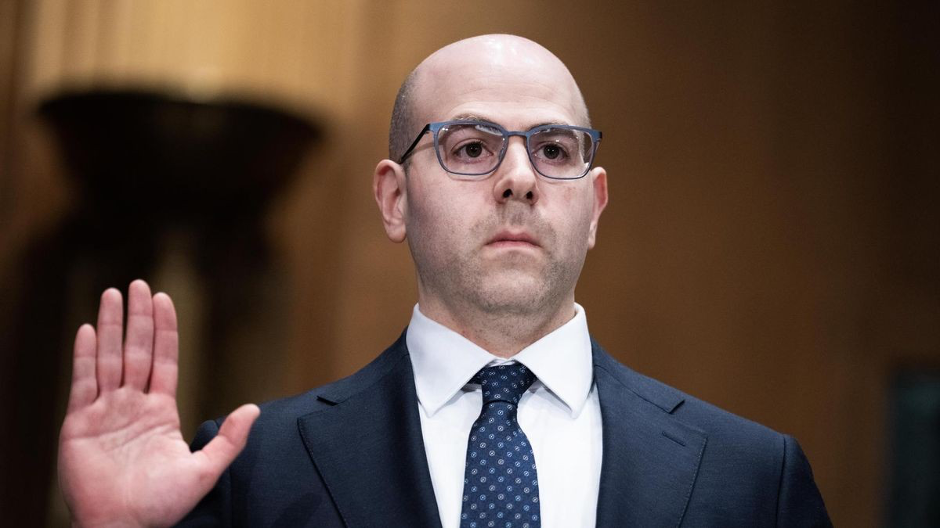
Many goals at the same time
In a nutshell, Donald Trump is aiming for the following with his policies: The global dominance of the dollar, but in a weakened form to support US exporters. He favors tax cuts that increase the budget deficit but lower government bond yields. He intends to raise tariffs on other countries to reduce the US trade deficit, but at the same time strengthen the attractiveness of the US as a location for foreign investment and re-industrialize the US. Finally, he wants to refinance the US’s huge mountain of debt with long-dated newly issued bonds with lower interest rates.
As Trump is famous for repeatedly changing his strategy within 24 hours, a detailed analysis of the “Users’ Guide” published last November would not be appropriate, as it is not yet possible to predict how Trump will change this accord – and he will certainly have to do so given the constantly changing situation.
Contradictions
The goals are also partly contradictory: Trump wants the US dollar to remain dominant as a reserve currency; it has to, otherwise it will lose a huge advantage – the exorbitant privilege – that a reserve currency has. Since a reserve currency is held by the whole world in the form of bonds, the US can automatically refinance itself. For countries that hold the US dollar as a reserve currency, however, a weakening US dollar is of no interest, as the value of their reserves is reduced by a dollar depreciation – in other words, they lose money. This contradiction alone shows that the Americans’ overall strategy has not been thought through or can only be successfully implemented if the Americans have the full power to force the rest of the world into this corset. More on this below.
Trade war as a first step – implausible justifications and not well thought through
Trump is already trying to implement one step – he has unleashed an unprecedented trade war against friend and foe, measuring the new tariffs not against the tariffs imposed by the trading partners concerned, but against the US trade deficit, and thus against the US’s own inability to produce goods that are really coveted by foreign trading partners. (See our comments on this in: Trump-Putin: A deal, Yalta or no deal?) This voodoo calculation of US tariffs is rightly being criticized extremely harshly by all trading partners. This makes Trump completely untrustworthy.
Trump’s aim is to protect and promote American industry through the tariffs. However, Trump’s team made a major error in reasoning: according to the American National Association of Manufacturers, 56% of all US imports are basic products for further processing in American industry, which means that such tariffs harm the American industry that Trump wants to protect and promote. Trump’s tariff dispute is therefore not well thought out.
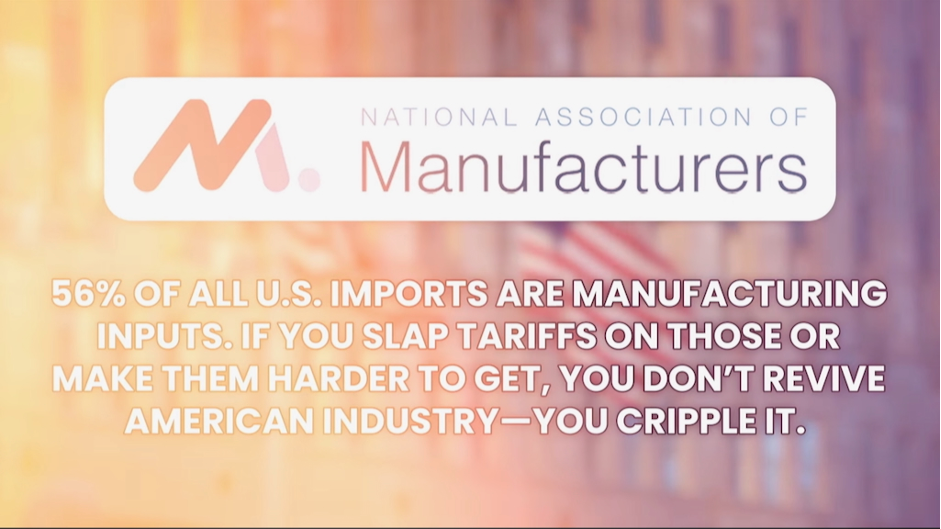
China does not join in – Trump backs down – not credible
Trump’s chosen “shock and awe” strategy may work for countries in the Collective West; Scott Bessent has claimed that over a hundred countries already want to negotiate. That may be, but the elephant in the room is China and the yellow giant is not dancing along and actually has the means to cause major problems for the US, which has already been done: The export of rare earths to the US has been blocked. Trump has already spelled back. The Chinese are determined not to back down in this battle – or rather war. When the Chinese defy Trump, it has a different quality than when Mr. Merz tries to do the same in Berlin. The Americans will probably never learn that the same reaction from different countries can have a completely different quality. My view: the Chinese will remain firm.
Japan opposes Trump’s strategy
Japan has been on the verge of financial collapse for years and has so far managed to prevent a complete collapse by means that do not prevent the collapse but postpone it.
After Lebanon and Sudan, Japan has the highest national debt in the world at over 260%. Even in debt-ridden Europe, debt ratios are much lower – Greece: 162%. The low interest rates mean that government bonds are no longer finding buyers, meaning that the Japanese central bank currently holds around 45% of its own debt. Moreover, the Nikkei share index has never recovered since the biblical crash in December 1989 – that was 36 years ago.
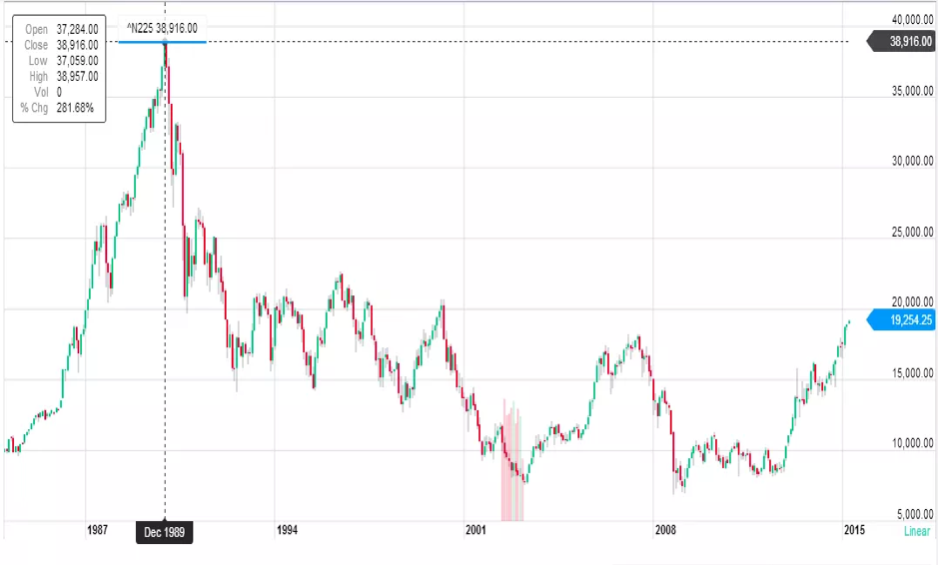
Against this background, it is quite understandable that the Japanese will do everything they can to avoid bringing yet another risk home. The Americans intend to make a deal with everyone except China and then stand as a group against China.
“And then we can approach China as a group,” he added.
Scott Bessent – 9. April 2025
The Japanese now have the choice of opposing either the Americans or the Chinese. Japan seems to have made its choice. However, it should be noted here that the US has a veritable weapon in its hand due to so-called SWAP agreements through which the FED supplies Japan with US dollars. The Japanese therefore run the risk that the Americans could cause or threaten a financial collapse of the already more than fragile Japanese market. Hence the very cautious tone of the Japanese.
Japan does not want to become embroiled in US efforts to maximize trade pressure on China by restricting its own economic ties with Beijing, which is Tokyo’s largest trading partner and a major source of goods and raw materials.
Although the US has not made any specific demands on Japan regarding China, Tokyo would prioritize its own interests in the event of such demands, Japanese officials said. One of the officials added that Japan has repeatedly told China that it does not fully agree with the US on chip exports and semiconductor restrictions. Yesterday I had a conversation on this topic with a close friend who seems to know the Japanese well. He is skeptical about the Japanese backbone toward the US. His conclusion is that the Japanese don’t have the stomach to stand up to the US. An interesting thought.
However, if Japan maintains this stance, it will be a first: Japan has been a colony of the US since 1945 and has never stood up to its colonial master. According to Japan’s largest trading partner in terms of imports and exports is not America, but China. However, Japan is essential for the geopolitical strategy of the US in Asia and is of the utmost importance. In no other country does the US operate more military installations than in Japan: 120 in number.
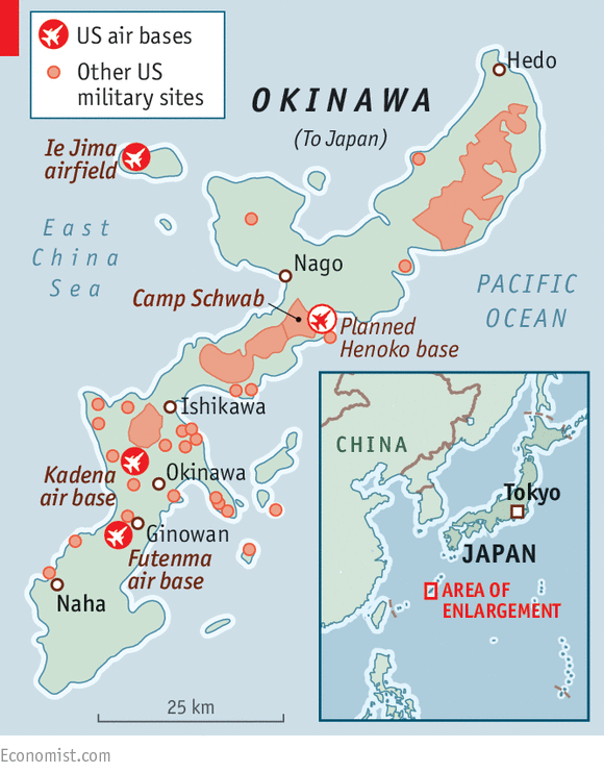
Japan is the most important stepping stone to China for the US. Without the American bases in Japan, the encirclement of China with American bases no longer holds. If Japan is eliminated (approx. 55,000 US soldiers), South Korea remains as number two, where the Americans have less than half the number of US soldiers stationed (24,000).
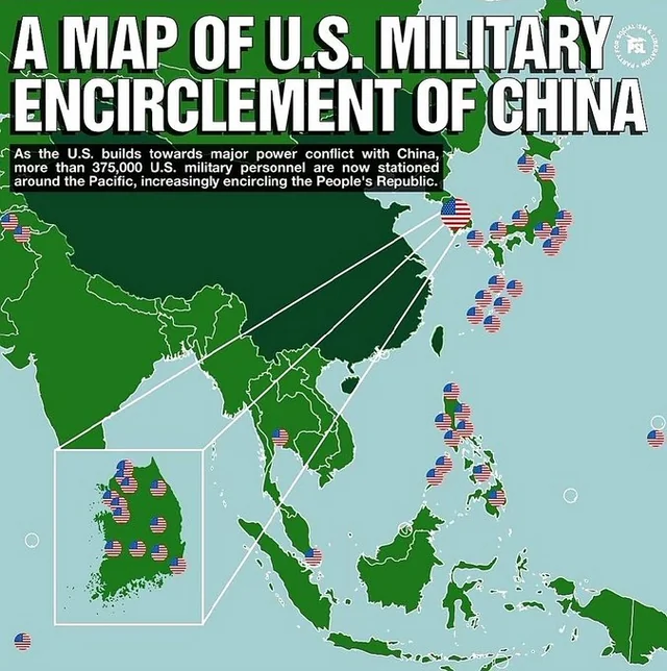
ASEAN stands up
ASEAN (Association of Southeast Asian Nations) has the following members: Brunei, Cambodia, Indonesia, Laos, Malaysia, Myanmar, the Philippines, Singapore, Thailand and Vietnam. Trade between ASEAN and China is growing steadily. In the first quarter, trade between ASEAN and China increased by 7.1% compared to the previous year, accounting for 16.6% of China’s total foreign trade. This makes ASEAN a more important trading partner for China than the US (just under 15%).
In a joint declaration dated May 4, 2025, ASEAN condemns trade protectionism (point 6). In point 7, the declaration reads:
“We call for enhanced regional unity and cooperation as we endeavor to weather the heightened uncertainty. Our current policy priority is to reinforce long-term resilience while maintaining flexibility to address near-term challenges, including rising protectionism and volatile global financial conditions.”
Asean – 4. Mai 2025 – Point 7
How ASEAN will do this is uncertain. What is certain, however, is that more and more Asian countries are standing together.
Interim result
The US’s efforts to create a new financial world order therefore not only have financial policy consequences for the whole world, but also have the potential to permanently upset the balance of dominance of the major powers.
Implementing – or rather enforcing – the Mar al Lago Accord is a Herculean task for the Americans, who successfully imposed such a dictate on the rest of the world 81 years ago. But times have changed – and so has the supremacy of the US.
Aiming for renewed dominance of the US
Responsibility as hegemon after the Second World War not assumed
The aim of the Americans is to dominate the whole world again as they did after the Second World War. However, the Americans failed to cherish and maintain their supremacy, as they launched numerous wars after the Second World War (Korea, Vietnam, etc.), overthrew governments (Middle East, South America etc.) and overextended themselves financially (Nixon Shock 1971). The collapse of the Soviet Union gave them another chance to make up for their mistakes and establish stability in the world.
After the collapse of the USSR – nothing learned
This would have been the optimal time to regain financial stability for the US, as the claimed dangers of the Cold War no longer existed. However, the US did exactly the opposite and sought complete dominance instead of looking after its own nation. The document was written in September 2000 by the neo-cons Dick Cheney, Paul Wolfowitz, Jeb Bush and Lewis Libby: “Rebuilding America’s Defenses – Strategy, Forces and Resources For a New Century”. A year later, 9/11 was the welcome trigger for many wars. We have already reported on this in detail in “Bloodbaths change the world – Part 2 – 9/11”. These wars all ended in military fiascos – the latest fiasco being the Ukraine war.
What the current administration does not understand or does not want to understand is the fact that mechanisms which the US is trying to implement with the Mar al Lago Accord require complete dominance or credibility of the US, because all measures of this new world order favor the US at the expense of the rest of the world.
Bretton Woods: Dictate of the victor
Holding all the strings but acting unreliable
The last time the world economic order was completely reorganized was during the Second World War – it was the summer of 1944.
In this context, it is not important whether the US can be credited with defeating the Nazis. The Russians may have borne the brunt, but the US began successfully raking in the spoils of war just under a year before the end of the European war. The aim was to dominate the world with the US dollar. This succeeded because the United States was at the zenith of its power: It dominated the war effort with the Russians, had 22,000 tons of gold and American industry produced 70% of the world’s goods. Total dominance looks like this: Military dominance; industrial dominance; gold.
The rest of the world – whether friend or foe – had no chance against such power based on the three pillars of military, industry and gold.
The Bretton Woods system was therefore an outgrowth of the absolute power of the US and not – as portrayed in the history books – a system negotiated by the victorious powers of the Second World War to protect the entire West in an atmosphere of friendly partnership.
Bretton Woods also sealed the demise of the British Empire by granting absolute power to the Americans by pegging the remaining currencies to the US dollar and linking it to gold, elegantly neutralizing the British pound – the previous reserve currency. The British, under John Maynard Keynes, proposed a system that provided for the introduction of the “ Bancor”. The Bancor would have been used as an international unit of account to which the participating currencies would have been linked. The value of the Bancor itself was to be backed by gold. The British failed – the Americans prevailed.
The system proposed by John Maynard Keynes, in which a gold-backed Bancor would have served as the unit of account, would have been a fair system that would have given countries with merit a fairer chance and would have led to a multipolar world – at least in terms of monetary policy. The US’s goal was neither fairness nor multipolarity, but dominance – which is what they achieved.
Just 26 years after the Second World War, President Nixon closed the so-called gold window. This is a more than benign description of reality: the Americans no longer fulfilled their main obligation – to exchange the US dollar for gold at any time at USD 35 per ounce. This is considered a breach of contract – the Bretton Woods partner states were left sitting on their paper dollars. Consequence: Since 1971, the US dollar has lost over 98% of its purchasing power (gold price 1971: 35.- per ounce; 2025: 3,250.- per ounce).
The last time the US pushed through a new world financial system in its favor in 1944, it was much more powerful than it is today and the world was able to see how reliable the American leadership was as a contractual partner without being able to do anything about it.
Trump praises gold
Interesting in this context is the statement made by President Trump on April 21, 2025, when he made the following statement on True Social:
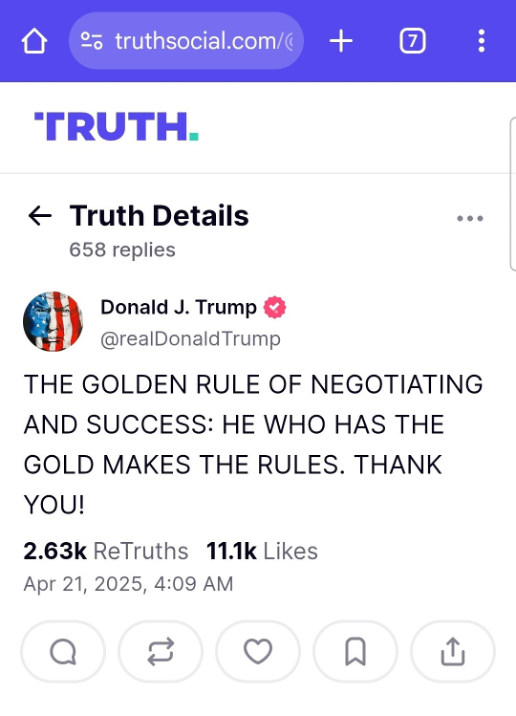
Incidentally, this is not one of Donald Trump’s own creations, but comes from a cartoon (The Wizard of Id) from 1964.

Who has the gold?
This news could be a trial balloon by Trump to show the world that gold will play a major role in the new system.
In 1944, the US had gold reserves of 22,000 tons, today the US claims to still have 8,133 tons. In our article “How BRICS could overcome its biggest challenge – the balance of payments”, we considered how much gold the major players actually have. There is a lot of writing about this that casts doubt on whether the US gold reserves are actually unencumbered. Nobody knows. However, President Trump announced in February that he wanted to check, an indication that not even the American president knows the truth.
What is much more certain, however, is that the actual reserves of China and Russia (officially around 2,500 tons each) are many times higher, namely around 12,000 tons for Russia and around 25,000 tons for China. Alastair Macleod has written and researched a lot about this.
Before gold can play a role again in a new system, the facts must first be put on the table. In today’s geopolitical environment, I doubt that this is possible or would be in the interests of those who are fibbing about their reserves.
Conclusion
The list of geopolitical problems that the US is currently facing is very long and the US itself is responsible for most of them. These are the consequences of the fact that, since 1945 at the latest, the US leadership believed that it could not exist without enemies, the military-industrial complex propagated and implemented the “forever war” and, with its (unsuccessful) focus on the military, neglected the well-being of its own country by systematically neglecting and/or destroying its infrastructure and industry. China did exactly the opposite: anyone who has traveled to China in recent times will recognize that the Chinese have not only built an industrial giant out of the ground in the last 40 years, but have also provided their people with an infrastructure that will bring tears of joy to your eyes. As a final consequence of its own actions, the US urgently needs a new international financial architecture in order not to drown in its own debt swamp.
With the Mar al Lago Accord, Trump seems to be trying to solve all the problems in one fell swoop. Apart from the fact that the objectives of this planned new dictate are partly contradictory, the question arises as to how it could be implemented.
In 1944, the Americans needed no charm to implement the Bretton Woods system: the magic word was “absolute power”.
Today, the situation is different. The US is battered and bogged down with an erratic foreign policy strategy: carrots and sticks only work if the stick really hurts. This no longer seems to be the case. This can be seen in the reactions of China and now also Japan.
What does it take to involve others in a treaty if you don’t have absolute power? – Credibility.
The American leadership has worked hard since World War II to appear as a treaty partner that cannot be trusted. Military allies have been continually left out in the cold, but most damagingly, the US bamboozled its 44 Bretton Woods partners in 1971. At this point, these countries had to make a fist of it, as they had no other choice. With a weakened America, I virtually rule out the possibility of the Americans taking over the leadership of the international financial system again.
The Trump administration must therefore come up with a proposal that the rest of the world can live with. The rest of the world includes 90% of the world’s population and has organized itself. The chances of achieving this are extremely slim. A speech by Treasury Secretary Scott Bessent at the IIF Global Outlook Forum on April 23, 2025 is testimony to this.
Bessent is arrogant and the lies and half-truths about Bretton Woods and the current situation are so numerous that listening to him not only hurts your ears, but your soul. Naturally, he makes no mention of the organization that represents the entire rest of the world. Without the involvement of this organization, which we keep reporting on, the Accord will be stuck in a bunker on the Mar al Lago golf course. – This organization is called BRICS.
17 thoughts on “Mar-al-Lago will fail – without credibility, nothing works.”